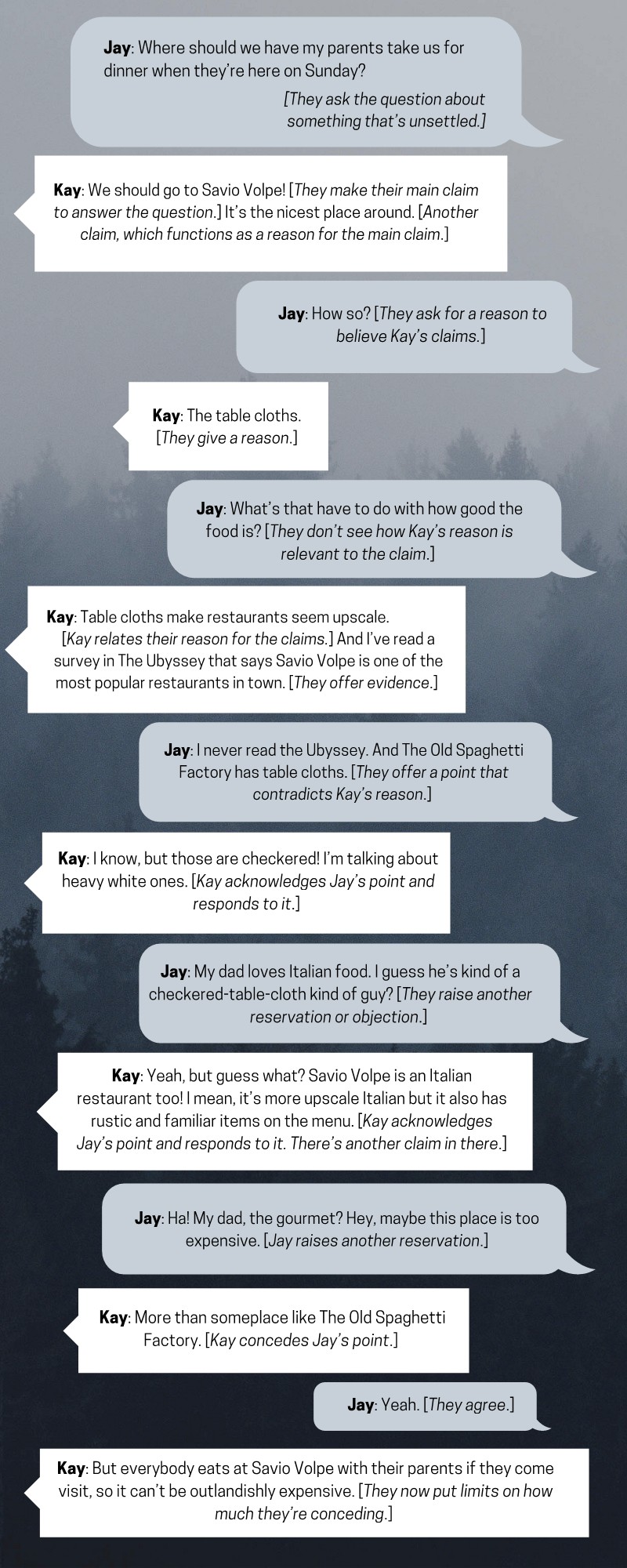Chapter 8: Making a Research Argument
Components of an Argument
When you argue with friends about something that’s uncertain or that needs to be decided, the components that make up these discussions are similar to the ones you’ll use in your scholarly writing.
For instance, the question gets things started off. The claim, or thesis, tells people what you consider a true way of describing a thing, situation, relationship, or phenomenon or what action you think should be taken. The reservations, alternatives, and objections that someone else brings up in your sources (or that you imagine your readers logically might have) allow you to demonstrate how your reasons and evidence (maybe) overcome that kind of thinking—and (you hope) your claim/thesis comes out stronger for having withstood that test.
NOTE:
This section on making an argument was developed with the help of “Making Good Arguments” in The Craft of Research, by Wayne Booth, Gregory Colomb, and Joseph Williams, University of Chicago Press, 2003.
You can also look at this “Argument as Dialog” example by downloading it as a Word document.
Try this mini-quiz:
Adaptations
This section has been adapted from The Purpose of Academic Argument and Components of an Argument in Choosing & Using Sources: A Guide to Academic Research by Teaching & Learning, Ohio State University Libraries, licensed under a Creative Commons Attribution 4.0 International License, except where otherwise noted.
References
Booth W., Colomb, G. & Williams, J. (2003). The Craft of Research. University of Chicago Press.
Media Attributions
- Argument as Dialog © Teaching & Learning, Ohio State University Libraries, and Lindsay Cuff adapted by Lindsay Cuff and Angie Goertz is licensed under a CC BY (Attribution) license
A statement that makes a claim or presents a theory. A thesis is the “focal point” of many academic works, which tend to hinge on either proving or challenging the main claim made in the thesis.


